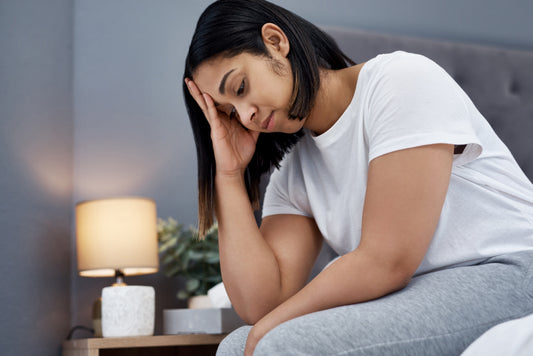We delve into the challenging nature of chronic pelvic pain (CPP). If you've ever experienced persistent discomfort in your pelvic region, you're not alone. Let's explore the common causes and discover the light at the end of the tunnel with possible treatment options.
- Decoding Chronic Pelvic Pain: What's Behind the Scenes?
Chronic pelvic pain isn't just a random ache; it often has identifiable causes. Some common culprits include:
- Pelvic Inflammatory Disease (PID): Infections in the reproductive organs can trigger persistent pelvic pain.
- Endometriosis: When tissue similar to the lining of the uterus grows outside it, it can lead to chronic pain.
- Interstitial Cystitis: A bladder condition causing long-term pelvic discomfort and a frequent urge to urinate.
- Musculoskeletal Issues: Tight muscles or imbalances in the pelvic floor can contribute to ongoing pain.
- Pelvic Inflammatory Disease (PID): Infections in the reproductive organs can trigger persistent pelvic pain.
Pelvic Inflammatory Disease (PID) is a condition primarily caused by sexually transmitted infections, such as chlamydia or gonorrhea, ascending from the cervix to the uterus and fallopian tubes. This upward spread of infection can result in inflammation and scarring of the reproductive organs. The persistent pelvic pain associated with PID is often characterized by a dull, aching sensation. In addition to pain, individuals with PID may experience abnormal vaginal discharge, pain during intercourse, irregular menstrual cycles, and, in severe cases, fertility issues. Timely diagnosis and treatment with antibiotics are crucial to prevent complications and alleviate pelvic pain.
- Endometriosis: When tissue similar to the lining of the uterus grows outside it, it can lead to chronic pain.
Endometriosis is a condition where tissue similar to the lining of the uterus (endometrium) grows outside the uterus, commonly on the ovaries, fallopian tubes, and the tissues lining the pelvis. This tissue, influenced by hormonal changes during the menstrual cycle, can cause inflammation, adhesions, and scarring. The chronic pelvic pain associated with endometriosis is often cyclical, worsening during menstruation. Other symptoms include pain during intercourse, heavy menstrual bleeding, and fertility challenges. Treatment may involve pain medications, hormone therapy, or in more severe cases, surgery to remove the endometrial tissue.
- Interstitial Cystitis: A bladder condition causing long-term pelvic discomfort and a frequent urge to urinate.
Interstitial Cystitis (IC), also known as painful bladder syndrome, is a chronic condition characterized by inflammation of the bladder wall. This inflammation can lead to pelvic pain, pressure, and a persistent urge to urinate, even when the bladder is not full. Individuals with IC may also experience discomfort during sexual intercourse. The exact cause of IC is not well understood, but it may involve a combination of factors, including bladder lining defects, autoimmune reactions, and nerve dysfunction. Treatment may include lifestyle modifications, dietary changes, medications to reduce inflammation, and, in some cases, bladder instillations or surgery.
- Musculoskeletal Issues: Tight muscles or imbalances in the pelvic floor can contribute to ongoing pain.
Musculoskeletal issues in the pelvic region can contribute significantly to chronic pelvic pain. This may involve tightness or spasms in the muscles of the pelvic floor, which can result from factors such as stress, trauma, or poor posture. Imbalances in these muscles can lead to chronic discomfort, pain during intercourse, and difficulty with bowel or bladder function. Physical therapy, specifically pelvic floor physical therapy, is often a key component of treatment for musculoskeletal-related pelvic pain. Therapists work with patients to release tension, improve muscle strength and coordination, and address any contributing factors such as poor body mechanics or posture. Additionally, exercises and relaxation techniques may be recommended to manage and prevent ongoing pelvic pain.
- The Detective Work: Diagnosing the Source
Diagnosing the source of chronic pelvic pain involves a comprehensive and systematic approach, akin to detective work. Healthcare providers employ a variety of methods to uncover the underlying cause and develop an effective treatment plan tailored to the individual's needs. Here's a closer look at the detective work involved in diagnosing chronic pelvic pain:
- Detailed Medical History:
- Healthcare professionals initiate the process by taking a thorough medical history. They inquire about the nature, duration, and intensity of the pelvic pain, as well as any associated symptoms.
- Questions may delve into the patient's menstrual history, sexual activity, urinary and bowel habits, and any relevant past surgeries or medical conditions.
- Physical Examination:
- A comprehensive physical examination is conducted, including a pelvic exam. This involves the healthcare provider palpating the pelvic organs, checking for abnormalities, tenderness, or signs of infection.
- The examination may also include an assessment of musculoskeletal factors, such as pelvic floor muscle tone and tenderness.
- Laboratory Tests:
- Depending on the suspected cause, various laboratory tests may be ordered. For instance, tests for sexually transmitted infections, urine analysis, and blood tests can help identify infectious or inflammatory causes.
- Hormonal assessments may be conducted to evaluate reproductive health and rule out conditions like endometriosis.
- Imaging Studies:
- Imaging modalities, such as ultrasound, CT scans, or MRI, may be utilized to visualize the pelvic organs and identify structural abnormalities. These can help diagnose conditions like ovarian cysts, fibroids, or abnormalities in the reproductive organs.
- Diagnostic Procedures:
- In some cases, diagnostic procedures are necessary for a more in-depth assessment. For example, a hysteroscopy or laparoscopy may be performed to directly visualize and assess the condition of the pelvic organs.
- These minimally invasive procedures allow healthcare providers to identify and, in some cases, treat issues like endometriosis or adhesions.
- Pain Mapping:
- In cases where musculoskeletal factors are suspected, pain mapping techniques may be employed. This involves systematically evaluating areas of tenderness or pain to pinpoint the source and guide targeted treatments.
- Collaboration with Specialists:
- Collaborative efforts with specialists, such as gynecologists, urologists, gastroenterologists, and physical therapists, may be essential. Each specialist brings expertise in different aspects of pelvic health, contributing to a comprehensive diagnosis.
- Patient Communication:
- Open and ongoing communication between the healthcare provider and the patient is crucial. Patients are encouraged to communicate any changes in symptoms, their impact on daily life, and the effectiveness of previous treatments.
The detective work in diagnosing chronic pelvic pain is a dynamic process that involves piecing together information from various sources. It requires a patient-centered approach, active involvement from the individual experiencing the pain, and a commitment to exploring different avenues until the root cause is identified. This collaborative and systematic approach ensures that the subsequent treatment plan addresses the specific needs and challenges of each patient.
- Light at the End of the Tunnel: Treatment Modalities
Now, let's talk solutions. The good news is that chronic pelvic pain is often manageable. Here are some treatment modalities:
- Medications: Depending on the underlying cause, your doctor might prescribe antibiotics for infections, pain relievers, or hormonal treatments.
- Physical Therapy: Strengthening and relaxing specific muscles in the pelvic area can work wonders. Your physical therapist will guide you through exercises tailored to your needs.
- Lifestyle Modifications: Simple changes like adjusting your diet, managing stress, and maintaining a healthy exercise routine can significantly impact pelvic pain.
- Surgical Interventions: In cases like endometriosis or structural issues, surgery might be recommended. Advances in minimally invasive procedures mean shorter recovery times.
- Counseling and Support: Dealing with chronic pain can take a toll on mental health. Seeking counseling or joining support groups can provide emotional relief and coping strategies.
- The Road to Relief: Your Role in Managing Pelvic Pain
Your journey to relief doesn't stop at the doctor's office. Be an active participant in your well-being:
- Communicate: Share your symptoms openly with your healthcare team.
- Follow the Plan: Stick to your treatment plan, including medications, exercises, and lifestyle changes.
- Self-Care: Incorporate self-care practices into your routine. This might include warm baths, relaxation techniques, or activities that bring you joy.
We Empower You to Take Control
Chronic pelvic pain doesn't have to continue. By understanding the causes and embracing a multifaceted treatment approach, you're on the path to a more comfortable, pain-free life. Consult with your healthcare provider, explore your options, and remember: relief is possible, and you're not alone in this journey!






